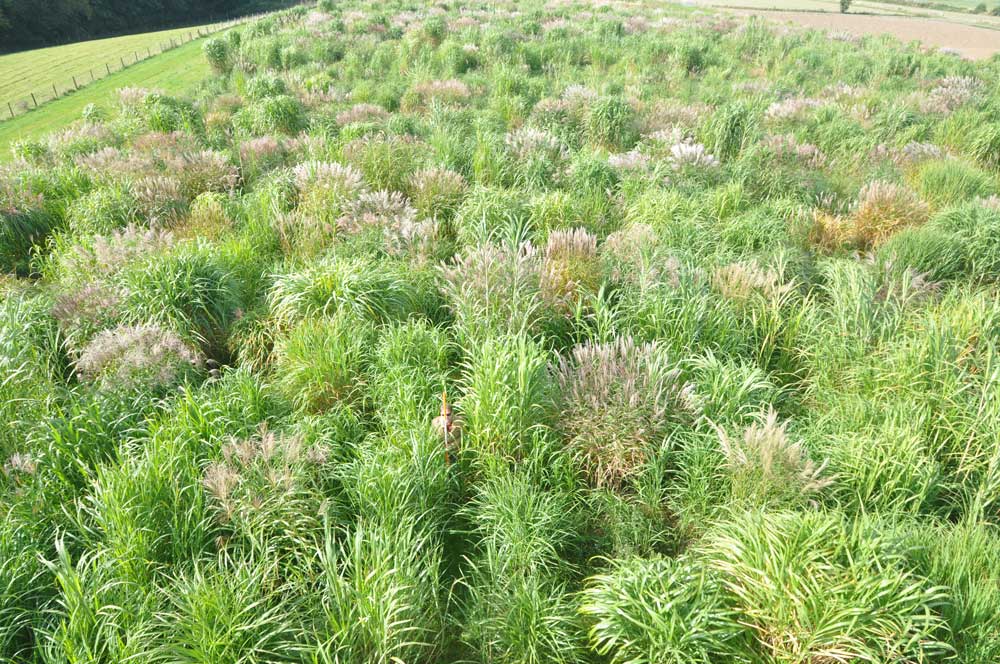New IBERS Study Reveals How Early Growth in Miscanthus Can Boost Biomass Yields

Measuring Miscanthus Stem Heights in the IBERS Trial Plots
13 May 2025
Researchers at Aberystwyth University’s Institute of Biological, Environmental and Rural Sciences (IBERS) have uncovered new insights into the seasonal growth patterns of Miscanthus—a key crop for sustainable bioenergy production.
In a study published in Frontiers in Plant Science, Dr Paul Robson and colleagues analysed stem growth in over 900 Miscanthus genotypes grown at the IBERS research station. The results show that earlier seasonal growth—particularly in plants collected from higher latitudes—can lead to greater biomass yields. However, the study also highlights how certain growth traits can negatively interact, limiting the overall seasonal growth potential.
Early Growth Matters, but Trade-offs Exist
The research found that Miscanthus plants that initiated growth earlier in the season tended to achieve higher dry biomass yields. However, plants with very rapid early growth often had shorter growth durations, meaning that although they grew quickly, they didn’t necessarily sustain growth throughout the season.
“Early growth provides a valuable head start in capturing light and building biomass, but there is a balance to strike,” said Dr Robson. “We see that rapid early elongation can sometimes be linked to a shorter overall growing season, which can ultimately limit total yield potential.”
A Treasure Trove of Genetic Diversity
The study took advantage of the rich genetic diversity in Miscanthus, analysing multiple species including M. sinensis, M. sacchariflorus, M. lutarioriparius, and M. floridulus. Differences in seasonal growth strategies were strongly influenced by species identity and geographic origin. Notably, M. lutarioriparius exhibited very rapid early growth but had a shorter growth duration and lower biomass accumulation. Meanwhile, M. sinensis genotypes from northern and mid-Japan showed earlier early-season growth and more sustained development across the season.
These insights highlight opportunities for breeders to selectively combine early growth with sustained seasonal development, aiming to create future Miscanthus crops that are both fast-growing and long-lasting.
Towards Better Bioenergy Crops
The work underscores the potential of using natural variation and targeted breeding to improve Miscanthus as a bioenergy crop. Increasing both the length and the productivity of the growing season could significantly boost the role of Miscanthus in replacing fossil fuels and helping meet net-zero carbon targets.
The research was supported by the UK Biotechnology and Biological Sciences Research Council (BBSRC) and builds on IBERS’ leading role in sustainable crop research.
Read the Full Study
The full article, "Seasonal stem growth analysis shows early stem growth of Miscanthus from high latitudes yields more biomass but stem traits negatively interact to limit seasonal growth", is available in Frontiers in Plant Science: https://doi.org/10.3389/fpls.2025.1569235



